| Classification of pain in the abdomen based on etiology
|
Disease
|
Clinical manifestations
|
Diagnosis
|
Comments
|
| Symptoms
|
Signs
|
| Fever
|
Rigors and chills
|
Abdominal Pain
|
Jaundice
|
GI Bleed
|
Hypo-
tension
|
Guarding
|
Rebound Tenderness
|
Bowel sounds
|
Lab Findings
|
Imaging
|
| Abdominal causes
|
Inflammatory causes
|
Pancreato-biliary disorders
|
| Acute pancreatitis
|
+
|
−
|
Epigastric
|
±
|
−
|
±
|
−
|
−
|
N
|
Increased amylase / lipase
|
Ultrasound shows evidence of inflammation
|
Pain radiation to back
|
| Primary biliary cirrhosis
|
−
|
−
|
RUQ/Epigastric
|
+
|
−
|
−
|
−
|
−
|
N
|
Increased AMA level, abnormal LFTs
|
|
|
| Cholelithiasis
|
±
|
−
|
RUQ/Epigastric
|
±
|
−
|
−
|
+
|
+
|
N to hyperactive for dislodged stone
|
Leukocytosis
|
Ultrasound shows gallstone
|
Murphy’s sign
|
| Gastric causes
|
Peptic ulcer disease
|
±
|
−
|
EpisodicEpigastric
|
−
|
|
+ in perforated
|
+
|
+
|
N
|
- Ascitic fluid
- LDH > serum LDH
- Glucose < 50mg/dl
- Total protein > 1g/dl
|
Air under diaphragm in upright CXR
|
Upper GI endoscopy for diagnosis
|
| Gastritis
|
±
|
−
|
Epigastric
|
|
+ in chronic gastritis
|
−
|
|
|
|
|
|
|
| Gastroesophageal reflux disease
|
−
|
−
|
Epigastric
|
−
|
−
|
−
|
−
|
−
|
|
|
|
|
| Gastric outlet obstruction
|
−
|
−
|
Epigastric
|
−
|
−
|
±
|
|
|
Hyperactive
|
|
|
|
| Intestinal causes
|
Acute appendicitis
|
+
|
+in pyogenic appendicitis
|
Starts in epigastrium, migrates to RLQ
|
−
|
−
|
+ in perforated appendicitis
|
+
|
+
|
Hypoactive
|
Leukocytosis
|
Ultrasound shows evidence of inflammation
|
Nausea & vomiting, decreased appetite
|
| Extra-abdominal causes
|
Pulmonary disorders
|
Pleural empyema
|
+
|
±
|
RUQ/Epigastric
|
−
|
−
|
−
|
−
|
−
|
N
|
|
|
|
| Cardiovascular disorders
|
Myocardial Infarction
|
−
|
−
|
Epigastric
|
−
|
−
|
+ in cardiogenic shock
|
−
|
−
|
N
|
|
|
|
| Abbreviations: RUQ= Right upper quadrant of the abdomen, LUQ= Left upper quadrant, LLQ= Left lower quadrant, RLQ= Right lower quadrant, LFT= Liver function test, SIRS= Systemic inflammatory response syndrome, ERCP= Endoscopic retrograde cholangiopancreatography, IV= Intravenous, N= Normal, AMA= Anti mitochondrial antibodies, LDH= Lactate dehydrogenase, GI= Gastrointestinal, CXR= Chest X ray, IgA= Immunoglobulin A, IgG= Immunoglobulin G, IgM=Immunoglobulin M, CT= Computed tomography, PMN= Polymorphonuclear cells, ESR= Erythrocyte sedimentation rate, CRP= C-reactive protein
|
<figure-inline class="mw-default-size"><figure-inline><figure-inline><figure-inline><figure-inline><figure-inline><figure-inline>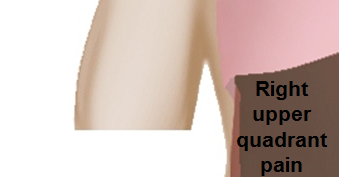 </figure-inline></figure-inline></figure-inline></figure-inline></figure-inline></figure-inline></figure-inline> </figure-inline></figure-inline></figure-inline></figure-inline></figure-inline></figure-inline></figure-inline> |
<figure-inline class="mw-default-size"><figure-inline><figure-inline><figure-inline><figure-inline><figure-inline><figure-inline>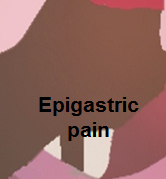 </figure-inline></figure-inline></figure-inline></figure-inline></figure-inline></figure-inline></figure-inline> </figure-inline></figure-inline></figure-inline></figure-inline></figure-inline></figure-inline></figure-inline> |
<figure-inline class="mw-default-size"><figure-inline><figure-inline><figure-inline><figure-inline><figure-inline><figure-inline>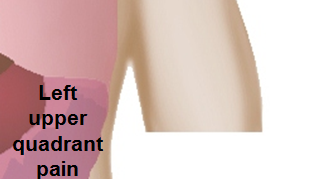 </figure-inline></figure-inline></figure-inline></figure-inline></figure-inline></figure-inline></figure-inline> </figure-inline></figure-inline></figure-inline></figure-inline></figure-inline></figure-inline></figure-inline>
|
<figure-inline class="mw-default-size"><figure-inline><figure-inline><figure-inline><figure-inline><figure-inline><figure-inline> </figure-inline></figure-inline></figure-inline></figure-inline></figure-inline></figure-inline></figure-inline> </figure-inline></figure-inline></figure-inline></figure-inline></figure-inline></figure-inline></figure-inline> |
<figure-inline class="mw-default-size"><figure-inline><figure-inline><figure-inline><figure-inline><figure-inline><figure-inline>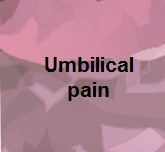 </figure-inline></figure-inline></figure-inline></figure-inline></figure-inline></figure-inline></figure-inline> </figure-inline></figure-inline></figure-inline></figure-inline></figure-inline></figure-inline></figure-inline> |
<figure-inline class="mw-default-size"><figure-inline><figure-inline><figure-inline><figure-inline><figure-inline><figure-inline> </figure-inline></figure-inline></figure-inline></figure-inline></figure-inline></figure-inline></figure-inline> </figure-inline></figure-inline></figure-inline></figure-inline></figure-inline></figure-inline></figure-inline>
|
<figure-inline class="mw-default-size"><figure-inline><figure-inline><figure-inline><figure-inline><figure-inline><figure-inline>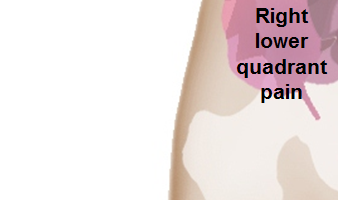 </figure-inline></figure-inline></figure-inline></figure-inline></figure-inline></figure-inline></figure-inline> </figure-inline></figure-inline></figure-inline></figure-inline></figure-inline></figure-inline></figure-inline> |
<figure-inline class="mw-default-size"><figure-inline><figure-inline><figure-inline><figure-inline><figure-inline><figure-inline>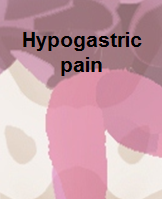 </figure-inline></figure-inline></figure-inline></figure-inline></figure-inline></figure-inline></figure-inline> </figure-inline></figure-inline></figure-inline></figure-inline></figure-inline></figure-inline></figure-inline> |
<figure-inline class="mw-default-size"><figure-inline><figure-inline><figure-inline><figure-inline><figure-inline><figure-inline>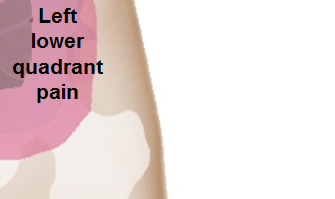 </figure-inline></figure-inline></figure-inline></figure-inline></figure-inline></figure-inline></figure-inline> </figure-inline></figure-inline></figure-inline></figure-inline></figure-inline></figure-inline></figure-inline>
|
References
- ↑ Gralnek IM, Barkun AN, Bardou M (2008). "Management of acute bleeding from a peptic ulcer". N Engl J Med. 359 (9): 928–37. doi:10.1056/NEJMra0706113. PMID 18753649.
- ↑ Dallal HJ, Palmer KR (2001). "ABC of the upper gastrointestinal tract: Upper gastrointestinal haemorrhage". BMJ. 323 (7321): 1115–7. PMC 1121602. PMID 11701581.
- ↑ Nelson DR, Teckman J, Di Bisceglie AM, Brenner DA (2012). "Diagnosis and management of patients with α1-antitrypsin (A1AT) deficiency". Clin Gastroenterol Hepatol. 10 (6): 575–80. doi:10.1016/j.cgh.2011.12.028. PMC 3360829. PMID 22200689.
- ↑ Tsochatzis EA, Bosch J, Burroughs AK (2014). "Liver cirrhosis". Lancet. 383 (9930): 1749–61. doi:10.1016/S0140-6736(14)60121-5. PMID 24480518.
- ↑ Schuppan D, Afdhal NH (2008). "Liver cirrhosis". Lancet. 371 (9615): 838–51. doi:10.1016/S0140-6736(08)60383-9. PMC 2271178. PMID 18328931.
- ↑ Kahrilas PJ (2008). "Clinical practice. Gastroesophageal reflux disease". N Engl J Med. 359 (16): 1700–7. doi:10.1056/NEJMcp0804684. PMC 3058591. PMID 18923172.
- ↑ Kahrilas PJ, Shaheen NJ, Vaezi MF, Hiltz SW, Black E, Modlin IM; et al. (2008). "American Gastroenterological Association Medical Position Statement on the management of gastroesophageal reflux disease". Gastroenterology. 135 (4): 1383–1391, 1391.e1–5. doi:10.1053/j.gastro.2008.08.045. PMID 18789939.
- ↑ Bredenoord AJ, Pandolfino JE, Smout AJ (2013). "Gastro-oesophageal reflux disease". Lancet. 381 (9881): 1933–42. doi:10.1016/S0140-6736(12)62171-0. PMID 23477993.
- ↑ Fox M, Forgacs I (2006). "Gastro-oesophageal reflux disease". BMJ. 332 (7533): 88–93. doi:10.1136/bmj.332.7533.88. PMC 1326932. PMID 16410582.
- ↑ Sugimachi K, Inokuchi K, Kuwano H, Ooiwa T (1984). "Acute gastritis clinically classified in accordance with data from both upper GI series and endoscopy". Scand J Gastroenterol. 19 (1): 31–7. PMID 6710074.
- ↑ Sipponen P, Maaroos HI (2015). "Chronic gastritis". Scand J Gastroenterol. 50 (6): 657–67. doi:10.3109/00365521.2015.1019918. PMC 4673514. PMID 25901896.
- ↑ Sartor RB (2006). "Mechanisms of disease: pathogenesis of Crohn's disease and ulcerative colitis". Nat Clin Pract Gastroenterol Hepatol. 3 (7): 390–407. doi:10.1038/ncpgasthep0528. PMID 16819502.
- ↑ Sipponen P (1989). "Atrophic gastritis as a premalignant condition". Ann Med. 21 (4): 287–90. PMID 2789799.
- ↑ Badillo R, Francis D (2014). "Diagnosis and treatment of gastroesophageal reflux disease". World J Gastrointest Pharmacol Ther. 5 (3): 105–12. doi:10.4292/wjgpt.v5.i3.105. PMC 4133436. PMID 25133039.
- ↑ Ramakrishnan K, Salinas RC (2007). "Peptic ulcer disease". Am Fam Physician. 76 (7): 1005–12. PMID 17956071.
- ↑ Banasch M, Schmitz F (2007). "Diagnosis and treatment of gastrinoma in the era of proton pump inhibitors". Wien Klin Wochenschr. 119 (19–20): 573–8. doi:10.1007/s00508-007-0884-2. PMID 17985090.
- ↑ Dicken BJ, Bigam DL, Cass C, Mackey JR, Joy AA, Hamilton SM (2005). "Gastric adenocarcinoma: review and considerations for future directions". Ann Surg. 241 (1): 27–39. PMC 1356843. PMID 15621988.
- ↑ Ghimire P, Wu GY, Zhu L (2011). "Primary gastrointestinal lymphoma". World J Gastroenterol. 17 (6): 697–707. doi:10.3748/wjg.v17.i6.697. PMC 3042647. PMID 21390139.
Template:WikiDoc Sources
|








